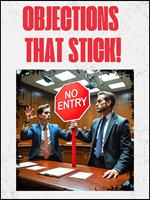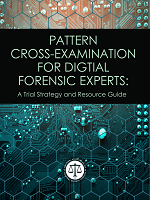- Minnesota has abolished the death penalty. Minnesota also abolished discretionary parole in 1980.
- Minnesota allows for mandatory LWOP and JLWOP. See Minn. Stat. § 609.106 (2012). (Minnesota calls LWOP “life in prison without the possibility of release,” or LWOR).
- Juveniles may be transferred to adult court at age 14. See Minn. Stat. § 260B.125 (2012).
State Constitution
Minn. Const., Art. I, § 5 (2012) No excessive bail or unusual punishments. -- Excessive bail shall not be required, nor excessive fines imposed, nor cruel or unusual punishments inflicted.
NOTE: Article I, Section 5 is technically broader than the Eighth Amendment. The Eighth Amendment prohibits “cruel and unusual” punishment, while Section 5 prohibits “cruel or unusual” punishment. Nevertheless, in regards to proportionality challenges, Minnesota courts borrow from federal precedent.
Sentencing Statutes
- Sentencing Guidelines System – Minnesota Sentencing Guidelines -- The guidelines require sentencing worksheets to be filled out, and departures from the guideline sentence are permitted only for compelling circumstances. Judges must disclose the reasons for any departure, and the defendant may appeal the departure. The Minnesota guidelines can be found here: https://mn.gov/sentencing-guidelines/assets/2012-Sentencing%20Guidelines_tcm30-31252.pdf
- Habitual Offender Statute – Minn. Stat. § 609.1095(2012) -- 609.1095 INCREASED SENTENCES FOR CERTAIN DANGEROUS AND REPEAT FELONY OFFENDERS
Case Law
General
Minnesota’s legislature has the power to determine criminal offenses and their punishments through statutes. Karius v. State, 2003 Minn. App. LEXIS 1230, 11-12 (Minn. Ct. App. Oct. 7, 2003).
Statutes are presumed constitutional, and therefore, the party who challenges the constitutionality of a statute bears the burden of “showing that our culture and laws emphatically and well nigh universally reject the sentence” imposed by the statute. State v. McDaniel, 777 N.W.2d 739, 753 (Minn. 2010) (quoting State v. Chambers, 589 N.W.2d 466, 479-80 (Minn. 1999); State v. Heden, 719 N.W.2d 689, 698 (Minn. 2006); State v. Pedersen, 679 N.W.2d 368, 377-378 (Minn. Ct. App. 2004); State v. Gutierrez, 667 N.W.2d 426, 438 (Minn. 2003).
State Constitution & Proportionality
The courts should not disturb the acts of the legislature unless the proscribed punishment is “out of all proportion to the crime so as to constitute a violation of the constitutional proscription against cruel and inhuman punishment.” State v. Christie, 506 N.W.2d 293, 299-300 (Minn. 1993).
Ordinarily, cruel punishment refers to mental and physical agony, or a punishment sentence of such duration that it is out of all proportion to the nature of the crime. State v. Christie, 506 N.W.2d 293, 299-300 (Minn. 1993).
Article 1 of the Minnesota Constitution prohibits "cruel or unusual punishments." Minn. Const. art. I, § 5. The language differs from the United States Constitution provision, which provides that no "cruel and unusual punishments" should be inflicted. U.S. Const. amend. VIII (emphasis added). We have explained that "[t]his difference is not trivial," and the Minnesota Constitution provides more protection than the U.S. Constitution. State v. Mitchell, 577 N.W.2d 481, 488 (Minn. 1998).
Article 1, Section 5 of the Minnesota Constitution prohibits “cruel or unusual punishments,” while the Eighth Amendment of the United States Constitution prohibits “cruel and unusual punishments.” This difference is not trivial. The “Minnesota Constitution provides more protection than the U.S. Constitution.” State v. McDaniel, 777 N.W.2d 739, 753 (Minn. 2010) (citing State v. Mitchell, 577 N.W.2d 481, 488 (Minn. 1998)). Under Article I, Section “a court should prohibit a punishment if it is either cruel or unusual.” State v. Martin, 773 N.W.2d 89, 98-99 (Minn. 2009) (citing State v. Mitchell, 577 N.W.2d 481, 488 (Minn. 1998)) (emphasis added).
“Although the clauses are different, we rely on the United States Supreme Court's construction of the Eighth Amendment to guide our interpretation of Article 1, Section 5, of the Minnesota Constitution.” State v. McDaniel, 777 N.W.2d 739, 753 (Minn. 2010).
When determining whether a sentence is cruel or unusual, Minnesota courts look to the proportionality of the offense to the punishment issued. State v. McDaniel, 777 N.W.2d 739, 753-754 (Minn. 2010). A court determines whether the punishment comports with “evolving standards of decency that mark the progress of a maturing society.” Id. (citing Trop v. Dulles, 356 U.S. 86, 101 (1958).
Compare with seemingly contradictory older case law:
- Karius v. State, 2003 Minn. App. LEXIS 1230, (Minn. Ct. App. Oct. 7, 2003) – “Although the Minnesota Supreme Court has not applied the comparable clause of the Minnesota Constitution to guarantee proportionality in sentencing, the court has indicated that any application would also focus on proportionality for which the threshold would be high.“ Id. at 11-12 (citations removed).
- State v. Christie, 506 N.W.2d 293, (Minn. 1993) – The Minnesota Supreme Court “has never tied the ‘cruel or unusual punishments’ clause to a guarantee of proportionality in sentencing.” Id. at 299-300.
We do not believe the guidelines were meant to function as constitutional mandates. The Minnesota Sentencing Guidelines were not “meant to function as constitutional mandates.” State v. Christie, 506 N.W.2d 293, 299-300 (Minn. 1993).
In “cruel or unusual” reviews of sentences, the court does not differentiate between offenders who were principal actors and those who were aiders and abettors where criminal intent is present. State v. McDaniel, 777 N.W.2d 739, 754 (Minn. 2010) (citing State v. Crow, 730 N.W.2d 272 (Minn. 2007).
When courts sentence offenders convicted under habitual offender statutes, they must punish the criminal behavior in light of the offenders past behavior. See State v. Combs, 504 N.W.2d 248, 252 (Minn. Ct. App. 1993).
A sentence of LWOR is not per se unconstitutional for a 17-year old juvenile defendant convicted of murder. State v. Martin, 773 N.W.2d 89, 99 (Minn. 2009).
Leading Court Discussions of Graham and Miller
Chambers v. State, 831 N.W.2d 311 (Minn. May 7, 2013) (Graham does not apply to juvenile offender convicted of first degree murder; Miller does not apply retroactively because it's a new procedural rule and not subject to the watershed exception) (Dissent: Miller is substantive in nature.)
Roman Nose v. State, 845 N.W.2d 193 (Minn. April 16, 2014) (follows Chambers and hold Miller does not apply retroactively)
State v. Vang, 847 N.W.2d 248 (Minn. May 7, 2014) (sentence of LWOP 30 years to juvenile does not violate Eighth Amendment.)
Ouk v. State, 847 N.W.2d 698 (Minn. June 11, 2014) (sentence of LWOP 30 years to juvenile does not violate Eighth Amendment.)













